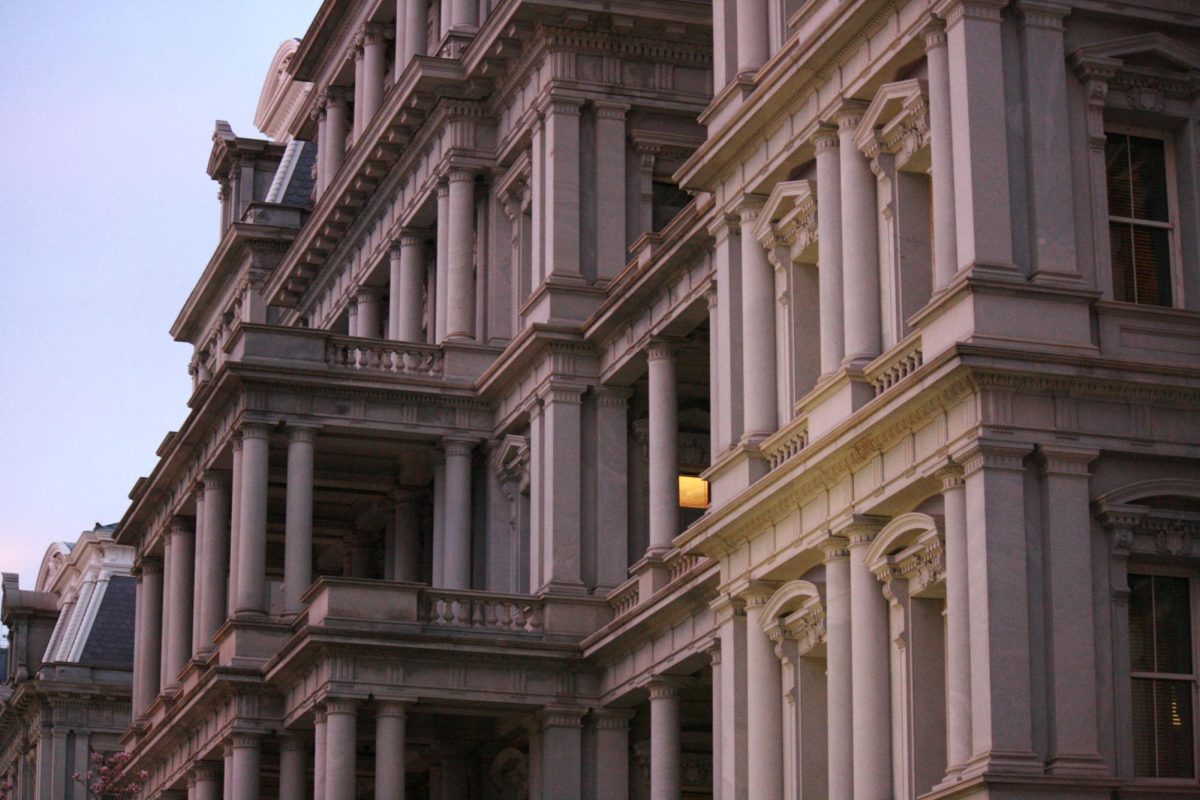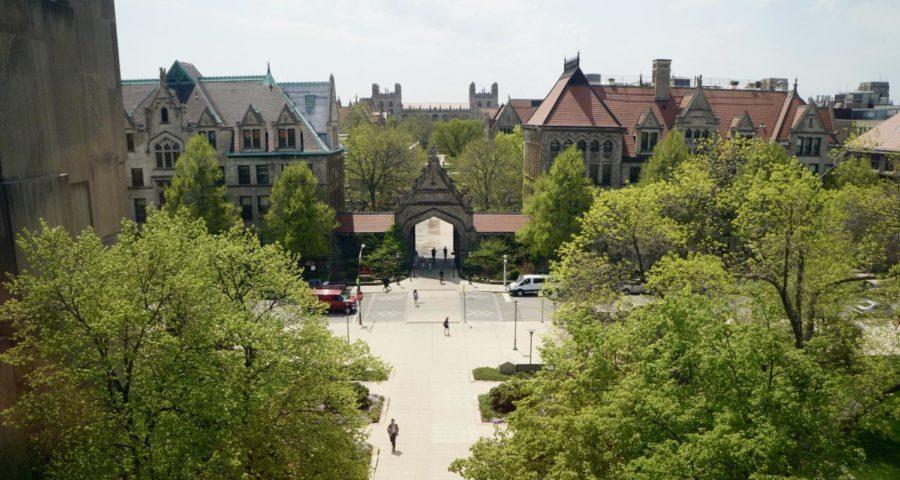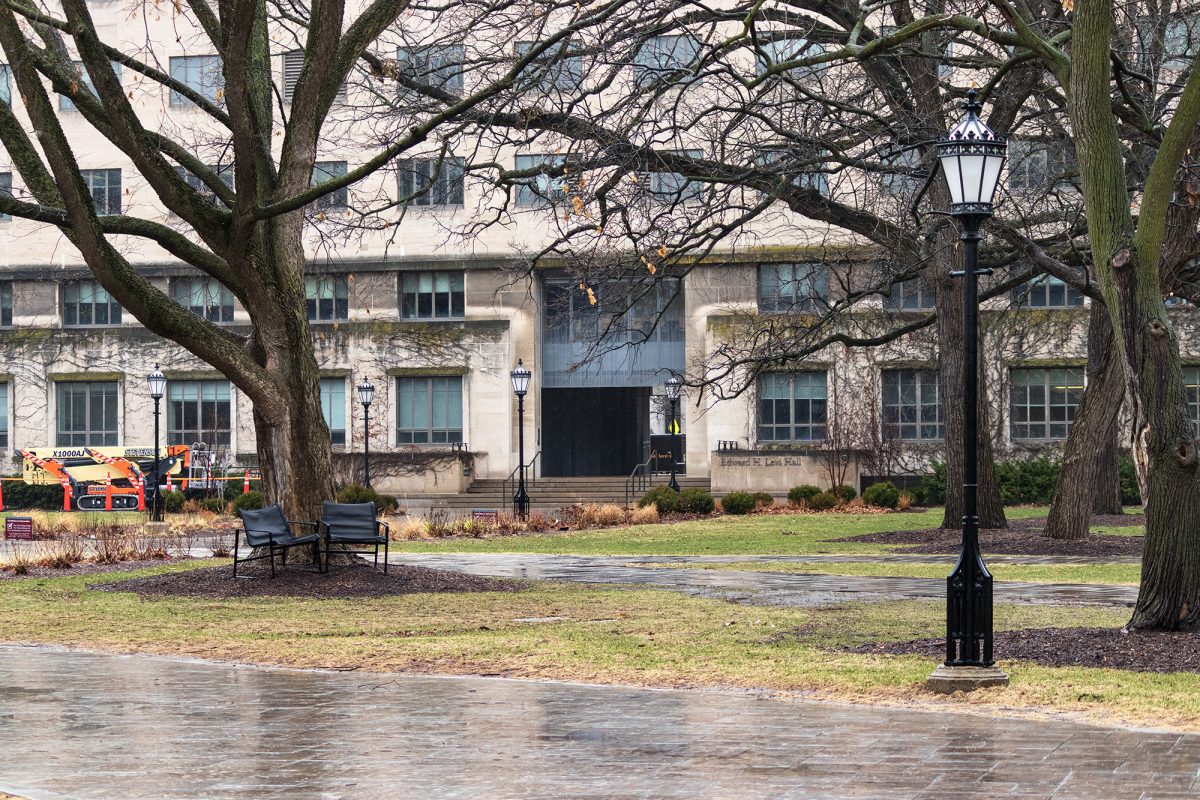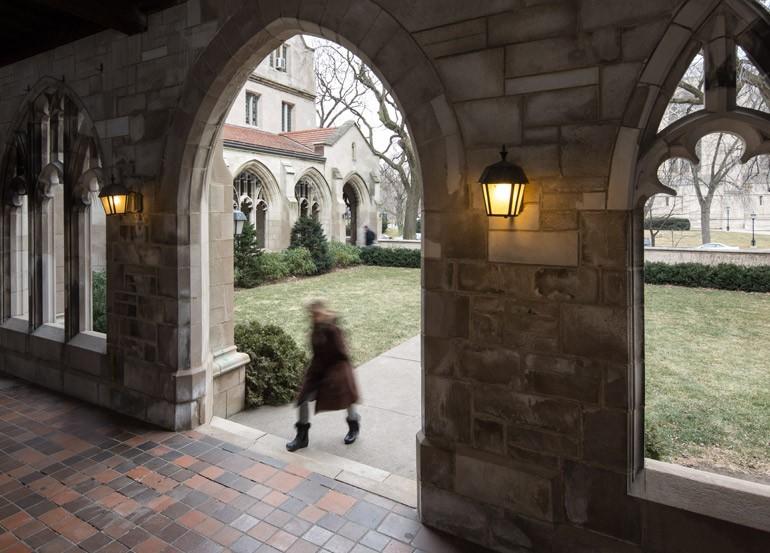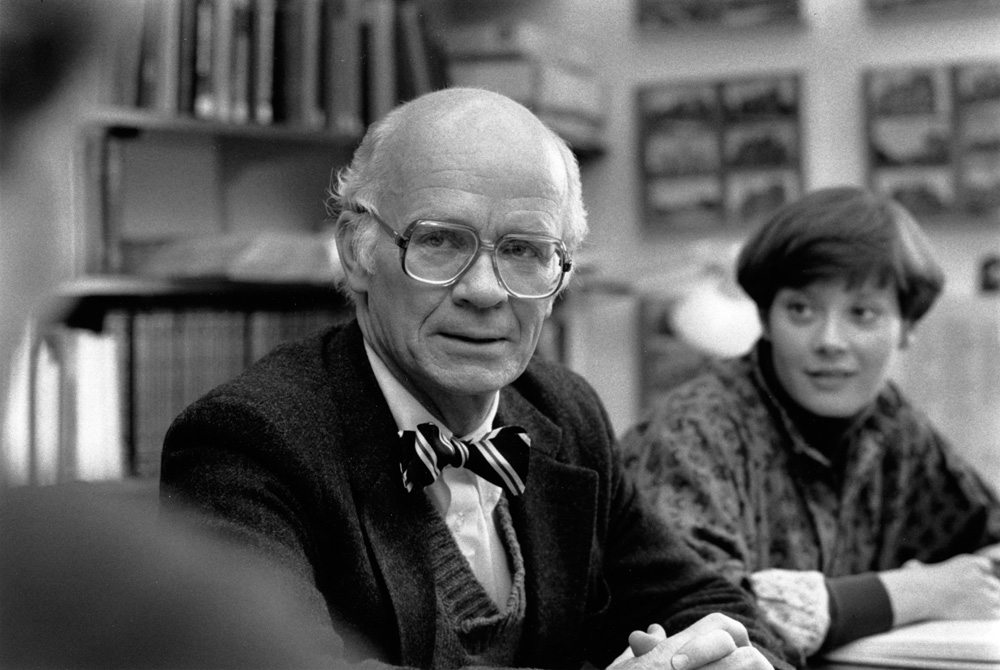[img id=”80565″ align=”alignleft”] Springtime in Chicago brings flowerbeds full of daffodils and tulips, the first leaves on campus trees, and lawns ripe for picnics and naps in the sunshine—all under the watchful eye of University Planner in Facilities Services Richard Bumstead and the facilities department.
The facilities department oversees annual spring restoration efforts on campus, revitalizing flora after the long and damaging winter months.
“This has been an especially hard winter on the landscape,” Bumstead said, referring to one of the coldest Chicago winters in the past quarter-century.
“It’s the typical spring cleanup, getting ready for the end-of-the-year events,” Bumstead said, who has served as university planner for nearly 25 years.
The end-of-year events include June’s four convocation ceremonies and Alumni Weekend, which is scheduled for June 5 through June 8. The celebrations typically draw thousands of visitors to campus, prompting the University to manicure the campus in ways that beg little recollection of the gray winter months.
“The University has really been funding over the past five or ten years to have these beautiful spaces,” said Abby Zanarini, assistant vice president for facilities services. “More than anything it’s a quality of life issue.”
Bumstead highlighted another major goal in landscaping: recruitment for prospective students.
“It’s this idea of, ‘Who wouldn’t want to come to school in a botanic garden?’ Higher education has become very competitive, and this was seen as another tool to get people to come here,” he said.
In 1997, the University was formally designated as a botanical garden by the American Association of Botanical Gardens and Arboreta. The U of C is the only school in the Chicago metropolitan area to have garnered this distinction.
As a botanical garden, the University allocates money in the facilities operating budget specifically for the care and maintenance of its gardens, which span the entire campus.
Bumstead pointed to the 1999 Campus Master Plan, which laid out architectural plans for Ratner, Bartlett, Max Palevsky, and other structures and put additional focus on the grounds.
“Part of that ’99 Master Plan was looking at how to make this a much more residential campus and the botanic garden was a small part of that, but a very visible part of it as well,” Bumstead said.
The University maintains a grounds service crew of 20 workers throughout the year. During the springtime, Bumstead said that the facilities department hires additional contract workers to assist with large-scale cleanup and maintenance.
“We use our grounds crew staff and then we also use our contracted vendors to supplement them,” he said.
This spring’s projects include the beautification of Botany Pond, where dozens of plants and flowers were installed this week, and Hull Court. Both projects are funded partially by the Julie and Parker Hall Landscape Endowment, Bumstead said.
However, not all springtime work actually takes place during the spring. Bumstead said that the planning for springtime planting efforts begin autumn quarter.
“In the fall we put most of the bulbs in the ground, and then in the spring for the pots we put in what are called forced bulbs—those are bulbs that have been grown in a greenhouse,” Bumstead said. “We put them in places where the bulbs would not have survived the winter.”
“We’ve definitely gotten strong backing from the central administration,” Zanarini said.
As for the end result, Bumstead said that the reaction is overwhelmingly positive—even from those who have already moved on from the community.
“The reactions I’ve been getting from alumni have been phenomenal,” Bumstead said. “Everyone is very happy to see what’s going on on campus and in the gardens.”



